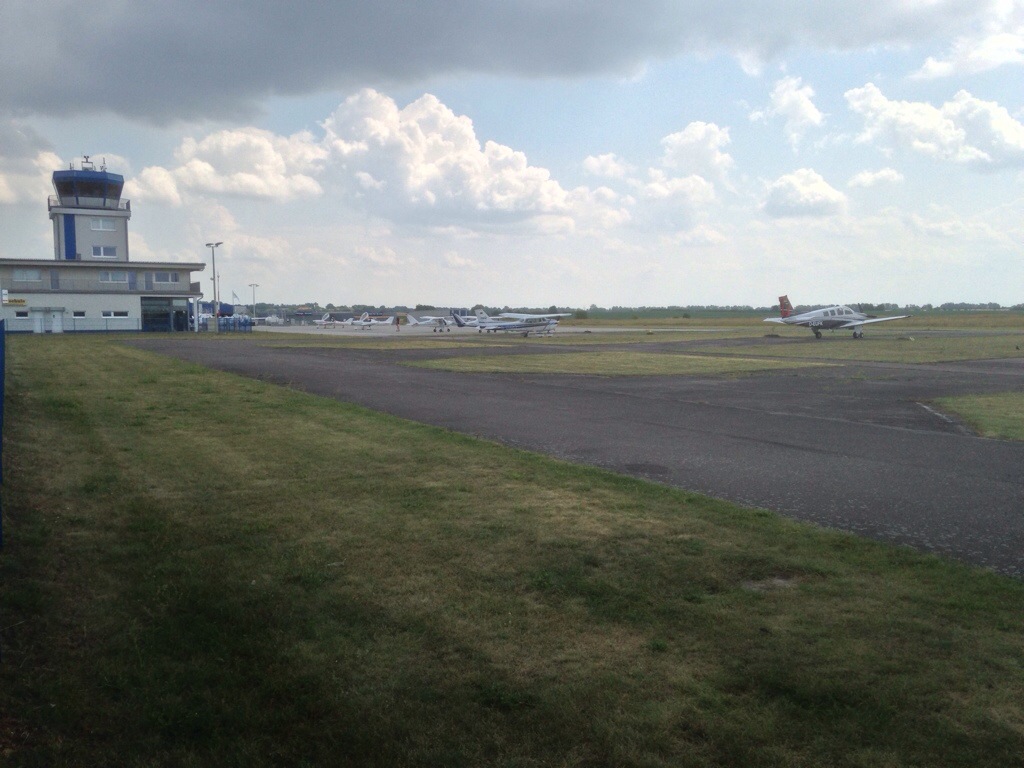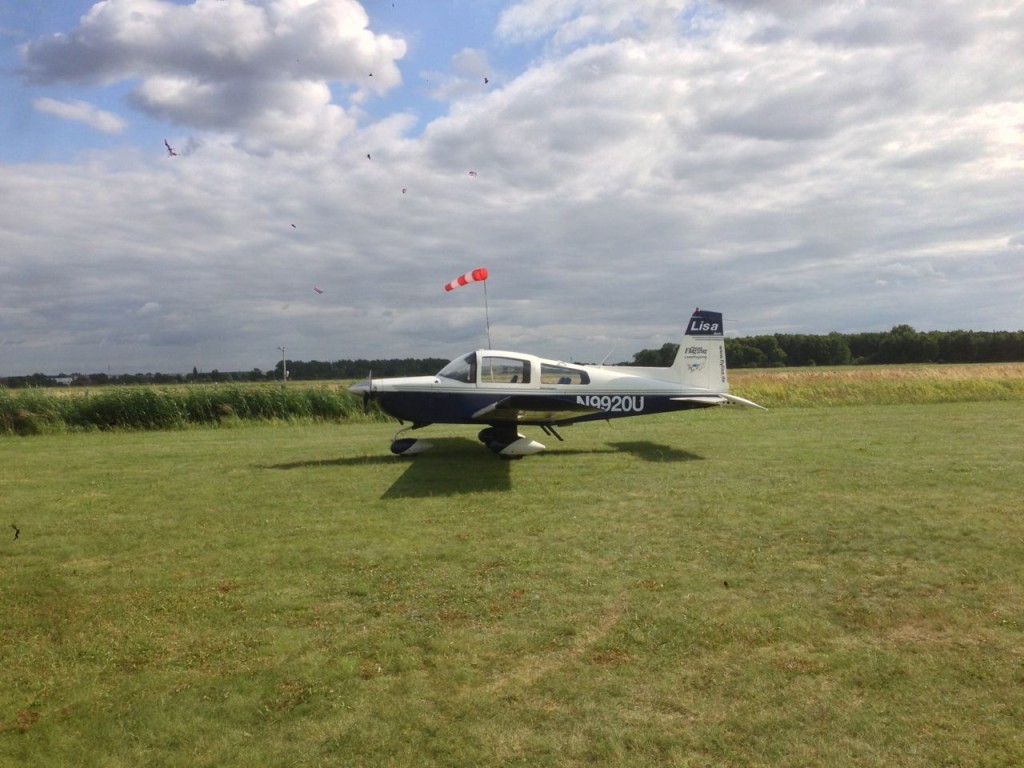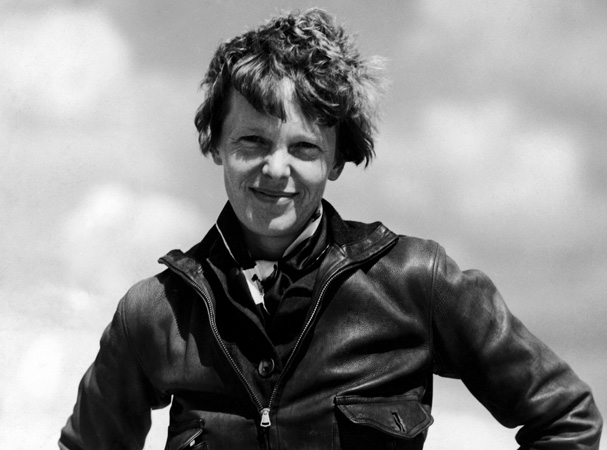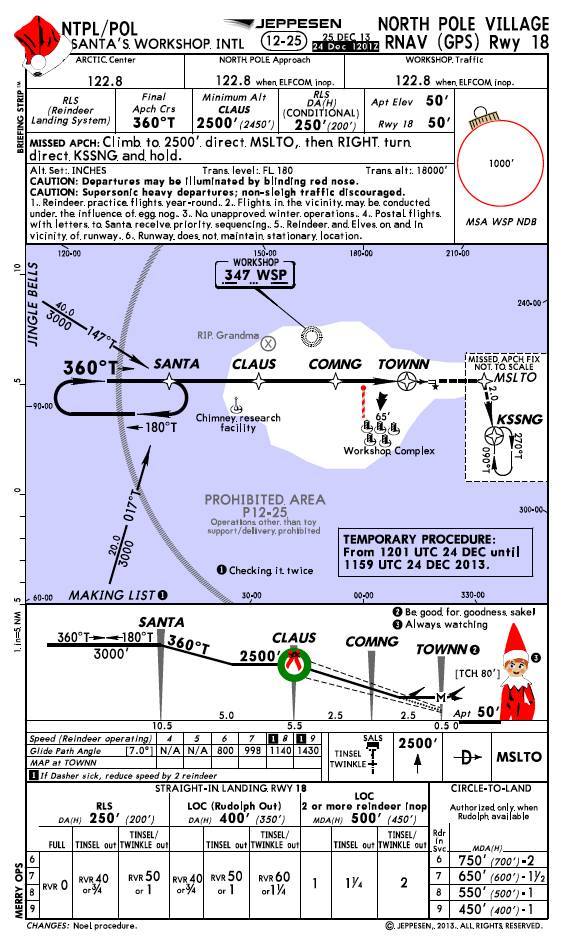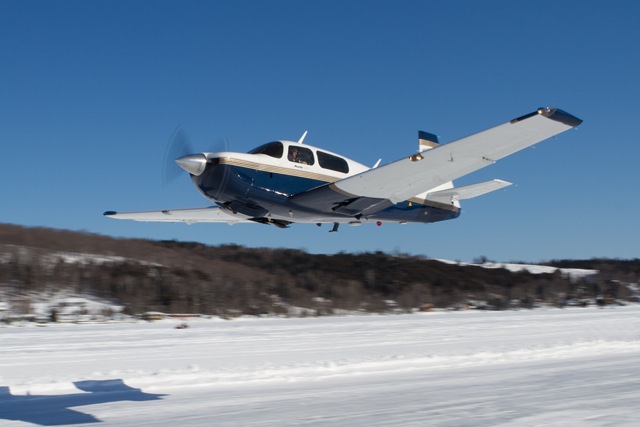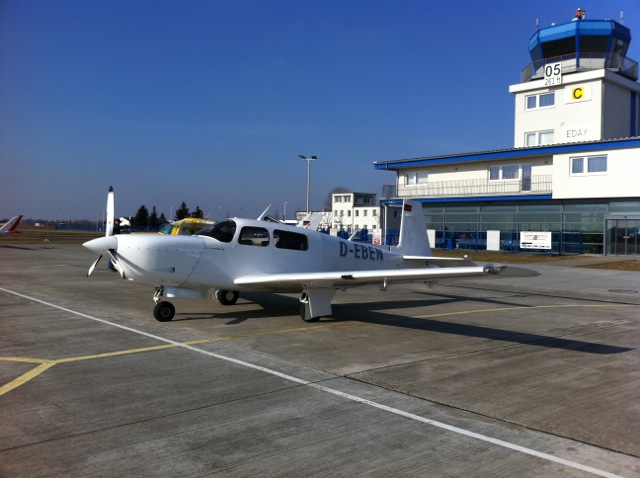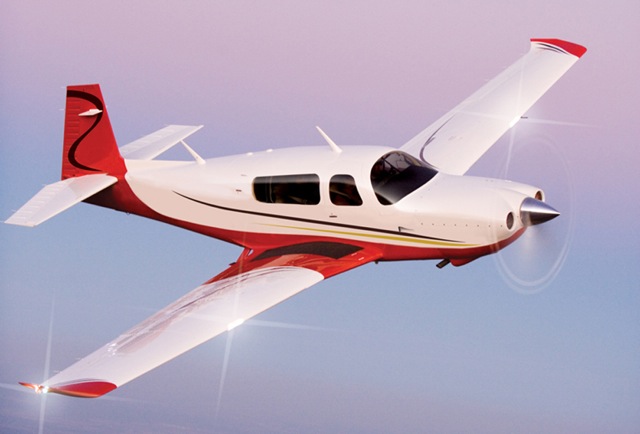PA-28
Visibility: unlimited
Temperature: 20°C
Wind: 330°, 8kts
QNH: 1013hPa
Location: EDAY
Equipment: PA-28 Archer III (D-EZIP)
The two big names in General Aviation are Cessna and Piper. I have been flying the Cessna 150 and 152 as well as the larger Cessna 172. They are not fast and not sleek but stable, roomy (by GA standards) and make great trainers.
Today I am getting to know the other side. My flight school manages a Piper Archer III and it is mine for the morning.
The PA-28 is a family of four seat, low wing airplanes. They have been in production since the early 1960s in many different variants. The Archer III model has a Lycoming O-360 engine with 180 horse powers, a fixed pitch prop and fixed landing gear.
„D-EZIP“ has a very flashy red and white paint scheme. She is newer than the Cessnas I have trained on and she has very few hours under her wings. So she looks and feels pretty new.
I have read the hand book. „India Papa“ is IFR certified. So her instrument panel is well equipped. She is a nice traveling machine or personal transporter with a few nice bells and whistles. But she is still a pretty straight forward airplane. Speeds and limitations are very comparable with the Cessna 172. Operating her under VFR is not all that complicated.
Familiarization
The PA-28 has a number of distinct differences to the Cessna 172. The airframe is a good bit smaller and the windows are not nearly as big. The low-wing Piper has only one door. So the pilot has to climb up onto the wing root, sit on the passenger seat and then scoot over.
Once in the seat, everything feels very solid and a bit more serious than in the Cessna. The Cockpit is very well organized, every gauge is easily visible and every knob is comfortable to reach. New to me is the overhead panel with the switches for magnetos, fuel pump, strobes, primer and starter. Solely the trim wheel is giving me problems. It is pretty far back between the seats and I actually have to look down and lift my right leg in order to see the trim indicator. That shall give me more problems later during the flight.
Power up
We go through the simple engine start procedure (carb heat cold, throttle position, magnetos, pump, mixture, start) and the 180 hp Lycoming starts right up. Taxiing „India Papa“ is easy enough but the front wheel is directly linked with the pedals. No hydraulic dampener – like in the Cessna – makes for a very direct transmission of forces back through the pedal.
We do the run-up checks and take off. We are not heavy and the Piper climbs as expected. The forces on the yoke are pretty strong and I try the electric trim with my thumb.
We go over to Neuhardenberg for touch-and-gos and on the way over we do the flying part of the familiarization. Steep turns, slow flight, flaps, stalls. All a bit unfamiliar but no real surprises. The low-wing configuration makes for less stable characteristics around the roll-axis. And the better aerodynamics and stronger engine makes for higher speeds.
On the first approach that gets me a bit. I am having difficulties bleeding off the access speed and I am fighting with the trim. At the end of the down wind leg, I set the first level of flaps. The nose comes up and before I manage to trim the correct attitude, we have climbed 100 feet. On final I set full flaps and trim again. I am too high and too fast and we float down the runway for a long time before rubber and tarmac finally make contact.
A touch-and-go is a fast procedure. Touch-down, retract flaps, carb heat off and throttle forward. Usually the airplane has not lost that much speed so you can rotate again just a moment later.
I keep an eye on the airspeed indicator and pull. But „India Papa“ does not want to break free. The speed increases and I pull further before I finally realize that I am still trimmed nose-down from the approach. My right hand feels for the trim wheel between the seats and after a few quick turns on the wheel, the control gets lighter and the little Piper flies.
Trim, trim, trim
The trim is a little extra tab on the trailing edge of the elevator. It is used to minimize the forces on the control yoke. The center of gravity of the aircraft varies with load and fuel. Without the trim, there would be a constant push or pull on the yoke, making it very difficult and tiresome to keep the airplane at the desired attitude. The forces on the yoke of the PA-28 are stronger than in the Cessna 172. More attention to the trim is needed.
On the Cessna I can change the attitude and trim as I go along. The trim wheel is below the throttle quadrant, easy to see and to reach.
„India Papa“ has a very comfortable electric trim on the yoke. But it is pretty slow, more for little corrections during cruise flight. With setting the flaps, a lot of trim is needed. The manual trim wheel for faster action is located between the front seats. But the bigger problem for the Piper newbie is the trim indicator which is also hidden between the seats. I will have to anticipate the trimming a bit more.
Practice
The next approach is a bit better already and from the third touch-and-go on, I have the amount of trim and the timing figured out.
After about an hour of this, we go back to Strausberg. The last landing of the day is actually pretty lousy. We have a cross wind and I am concentrated on keeping the aircraft on the center line. Managing energy does not work as well as I would like it to. So we are too fast on short final and are floating down the runway again.
With „India Papa“ and me it was not love at first flight. But the sleek beauty tickles me and time will tell if she is an acquired taste.
To be continued…


















